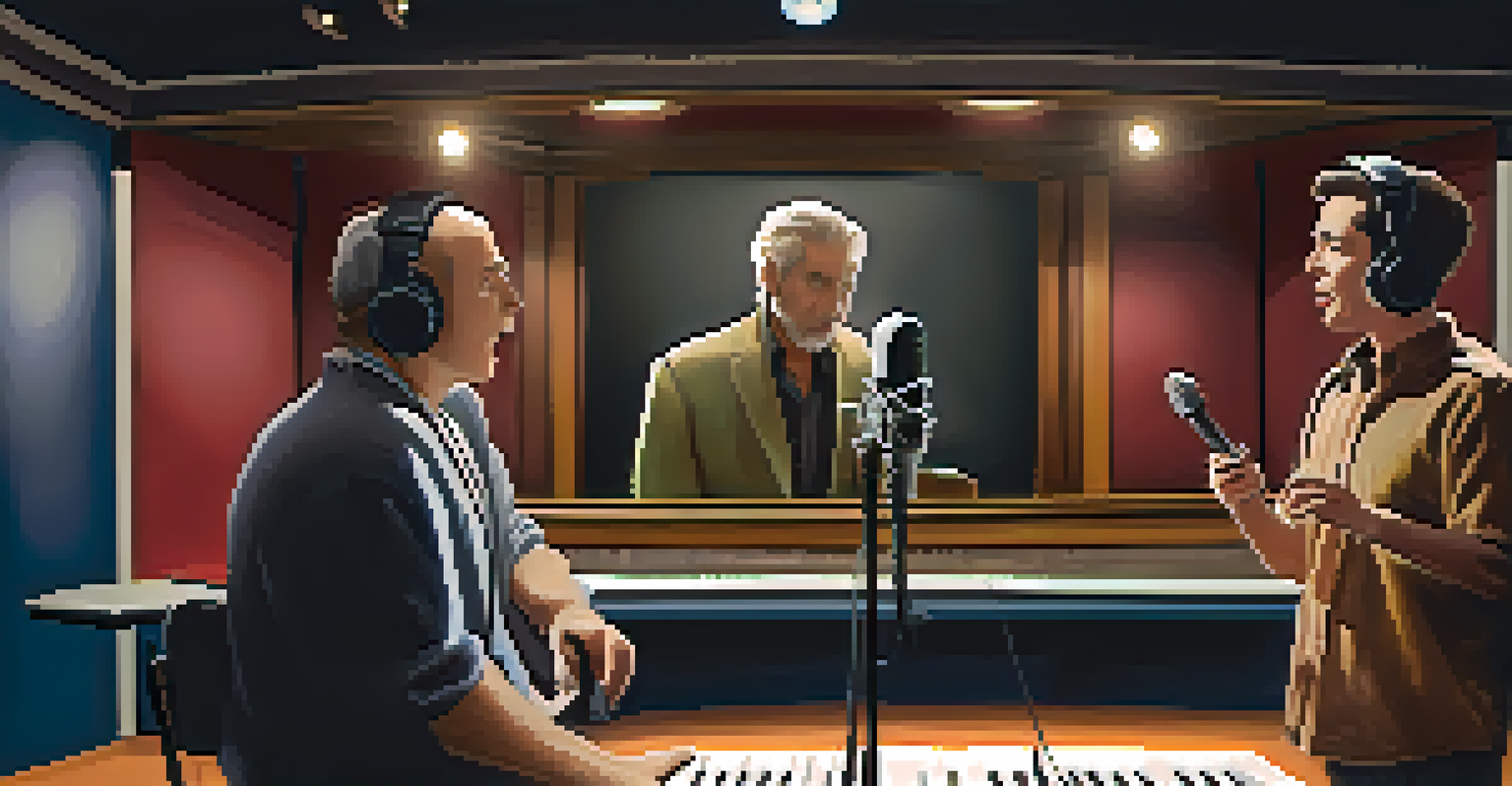Voice Acting vs. Traditional Acting: Key Differences

What is Voice Acting and Traditional Acting?
Voice acting involves providing the voice for characters in various media, such as animation, video games, and commercials. Unlike traditional acting, which often includes physical presence on stage or in front of a camera, voice acting relies solely on vocal expression to convey emotion and character.
Voice is the most powerful instrument of communication we have, and it can convey a wide range of emotions that transcends physical presence.
Traditional acting encompasses live performances and film roles, where an actor brings a character to life through both voice and physicality. This means that body language, facial expressions, and movement play a significant role in how the audience perceives the character.
Both forms of acting require skill and creativity, but they cater to different mediums and methods of storytelling, making them uniquely appealing to different types of performers.
The Role of Physical Presence in Acting
In traditional acting, physical presence is crucial. Actors use their bodies to express emotions and intentions, which can enhance the audience's understanding of the character's journey. The way an actor moves, gestures, and interacts with their environment adds layers to their performance.

Conversely, voice acting strips away the visual elements, placing the entire focus on vocal delivery. Voice actors must rely on tone, pitch, and rhythm to convey emotion and personality. This means that every nuance in their voice can significantly impact how a character is perceived.
Different Skills for Acting Types
Voice acting relies on vocal expression, while traditional acting incorporates physical presence for emotional storytelling.
While both forms of acting require practice and skill, the reliance on physicality in traditional acting contrasts sharply with the vocal focus of voice acting.
Emotional Expression: Different Techniques
Emotional expression in traditional acting combines visual and vocal elements. For example, an actor might project sadness through both their voice and their body language, creating a powerful connection with the audience. This dual approach allows for a more nuanced portrayal of complex emotions.
Acting is not about being someone different. It's finding the similarity in what is apparently different, then finding myself in there.
In voice acting, the challenge lies in conveying deep emotions without any physical cues. Voice actors must master techniques such as modulation and pacing to evoke feelings like joy, anger, or sorrow solely through their voice. This often requires a strong understanding of character psychology.
Both forms of acting demand emotional authenticity, but the techniques used to achieve that authenticity differ significantly, showcasing the versatility required in each discipline.
The Preparation Process: Rehearsals and Auditions
Preparing for a traditional acting role often involves extensive rehearsals, where actors work together to develop chemistry and timing. This collaborative process helps create a cohesive performance, often resulting in a strong bond among cast members.
Voice actors, on the other hand, may have less collaborative rehearsal time, especially when recording solo in a studio. They often rely on their instincts and the direction provided by sound engineers or directors, focusing on delivering strong vocal performances within a limited timeframe.
Preparation Varies by Acting Style
Traditional actors engage in extensive rehearsals for collaboration, whereas voice actors often work independently in studios.
While both preparation processes aim for a polished final product, the methods and dynamics involved in rehearsals and auditions can vary widely between traditional and voice acting.
The Tools of the Trade: Equipment and Environment
Traditional actors typically perform in theaters, film sets, or studios where they can interact physically with their surroundings. Their tools include costumes, props, and sets that help create the world of the story, enhancing the overall performance.
In contrast, voice actors primarily work in recording studios, utilizing microphones, soundproofing, and audio editing software. Their environment focuses on capturing clear vocal performances, often requiring them to envision the character's world without the actual visual elements present.
This difference in tools highlights how each type of acting has its own unique set of challenges and requirements, shaping the craft in distinct ways.
The Audience Experience: Visual vs. Auditory
The audience experience for traditional acting is a multisensory one, where viewers engage with both the visual and auditory aspects of the performance. The combination of visuals, sound, and live energy creates a rich, immersive experience that can evoke strong emotional responses.
On the flip side, voice acting engages the audience primarily through sound. Listeners must rely on their imagination to visualize characters and settings, which can create a different kind of emotional connection. This auditory focus often leads to a more personal experience, as listeners fill in the gaps with their imagination.
Unique Audience Experiences
Traditional acting offers a multisensory experience, while voice acting invites listeners to engage their imagination through sound.
Both audience experiences are valid and impactful, yet they draw on different senses and methods of engagement, reflecting the unique strengths of each acting style.
Career Paths: Opportunities and Challenges
Career paths in traditional acting often include theater, film, and television, with opportunities for live performances and on-screen roles. However, the competition can be fierce, and actors frequently face challenges such as typecasting and limited roles.
Voice acting has seen significant growth with the rise of animation and video games, creating new opportunities for voice talent. However, it requires a different skill set, and breaking into the industry can still be challenging due to the need for specialized training and networking.

Both traditional and voice acting offer fulfilling career paths, but they come with their own unique set of opportunities and hurdles that aspiring actors must navigate.
Conclusion: Appreciating Both Forms of Acting
In conclusion, voice acting and traditional acting are both vital forms of storytelling that serve different purposes and audiences. While they share similarities, the key differences in technique, preparation, and audience engagement highlight the unique artistry involved in each.
As the entertainment landscape continues to evolve, understanding and appreciating both forms of acting can enrich our experience as audience members. Whether you're captivated by the visual storytelling of film or the imaginative worlds created by voice actors, both have the power to move and inspire.
Ultimately, recognizing the distinct skills and contributions of each acting style enhances our appreciation for the diverse talent that exists in the world of performance.